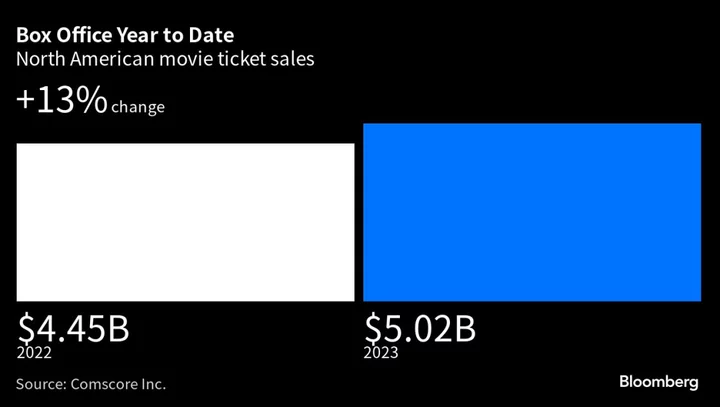
‘Mission: Impossible’ Opens to Lower-Than-Expected $56.2 Million
Mission: Impossible — Dead Reckoning Part One, the seventh installment of the action franchise starring Tom Cruise as
2023-07-17 01:54

Scientists say drinking coffee gives ‘special boost’ to the brain
If you’re anything like us, the first coffee of the day is the only thing that can get us up on a morning – and it turns out, there’s real science behind it. Everyone knows that coffee can give us a welcome caffeine hit, but it’s now been revealed that the drink also gives us an extra ‘special boost’ too. Scientists have claimed that the act of drinking a cup of joe gives the body a lift, making us more alert, which can’t be replicated merely with caffeine. In fact, new research shows that drinking hot coffee activates additional areas of the brain. Sign up to our free Indy100 weekly newsletter Scientists from the University of Minho in Portugal and elsewhere looked into the effects of coffee outside of just caffeine content as part of a study – and they found that plain caffeine didn’t have the same impact. In fact, a cup of coffee also influenced working memory and goal-directed behaviour. “There is a common expectation that coffee increases alertness and psychomotor functioning. When you get to understand better the mechanisms underlying a biological phenomenon, you open pathways for exploring the factors that may modulate it and even the potential benefits of that mechanism,” study co-author Nuno Sousa explained. Experts said that drinking coffee actually increased the connectivity in the brain’s more advanced nerve network controlling vision, and other parts involved in working memory, cognitive control and goal-directed behaviour – something not found when participants only took caffeine. Researchers also said that if subjects wanted to not just feel alert but ready to go, caffeine alone might not do the job. “Acute coffee consumption decreased the functional connectivity between brain regions of the default mode network, a network that is associated with self-referential processes when participants are at rest,” study co-author Maria Picó-Pérez said. “The subjects were more ready for action and alert to external stimuli after having coffee,” she added. Have your say in our news democracy. Click the upvote icon at the top of the page to help raise this article through the indy100 rankings.
2023-07-16 23:55

Call of Duty to remain on Playstation following Activision Blizzard Microsoft merger
Microsoft has signed an agreement with Sony to ensure "Call of Duty" remains available on PlayStation after Microsoft closes its $69 billion Activision Blizzard merger, the tech giant said Sunday.
2023-07-16 23:27

China’s Limits on Chip Metals Are Self-Defeating, Sullivan Says
China will only harm itself with planned restrictions on the export of two key metals in the semiconductor,
2023-07-16 22:29
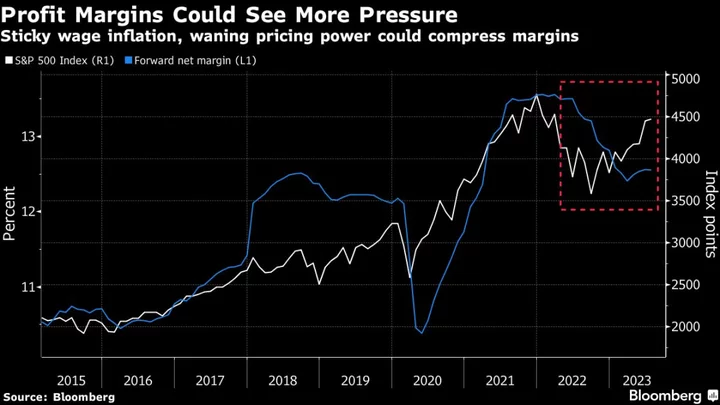
A $10 Trillion Stock Market Rally Faces Crucial Test in Earnings
A near-$10 trillion rally for global stocks this year will face a make-or-break moment as hundreds of companies
2023-07-16 21:57
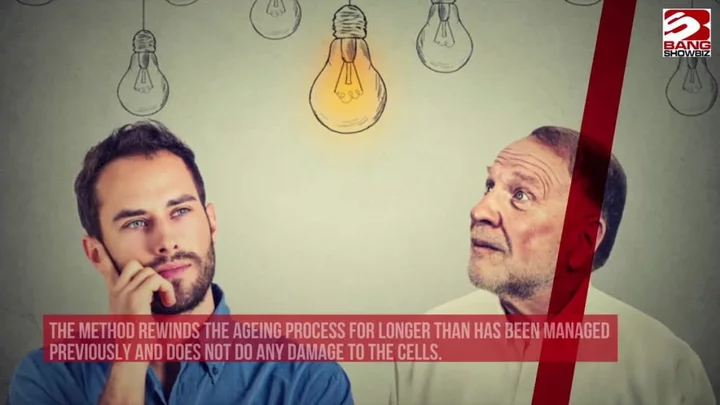
The reason why people really did look older in the past
Back in the day, it’s said that people looked a lot older earlier in life than they do now. As it turns out, there’s a few reasons why. A video essay exploring the phenomenon from Vsauce posits a few explanations why we notice people looking older at a younger age in old footage and photographs. For one, the improvements in standards of living and advancements in healthcare over the years offer an obvious factor. There’s also subconscious bias surrounding fashions from years gone by and their connection with older generations. Sign up to our free Indy100 weekly newsletter However, a study from 2018 also explored how biological ageing has changed in a short space of time. Did People Used To Look Older? www.youtube.com It found that human beings are actually biologically “younger” now than ever when it comes to changes in things like blood pressure – so there’s an actual physical difference between the generations that explains why people looked older sooner back in the day. The study explained that this is down to factors such as a fall in smoking, reading: "Over the past 20 years, the biological age of the U.S. population seems to have decreased for males and females across the age range. "However, the degree of change has not been the same for men and women or by age. Our results showed that young males experienced greater improvements than young females. This finding may explain why early adult mortality has decreased more for males than females, contributing to a narrowing of the gender mortality gap. Additionally, improvements were also larger for older adults than they were for younger adults." Have your say in our news democracy. Click the upvote icon at the top of the page to help raise this article through the indy100 rankings.
2023-07-16 19:47
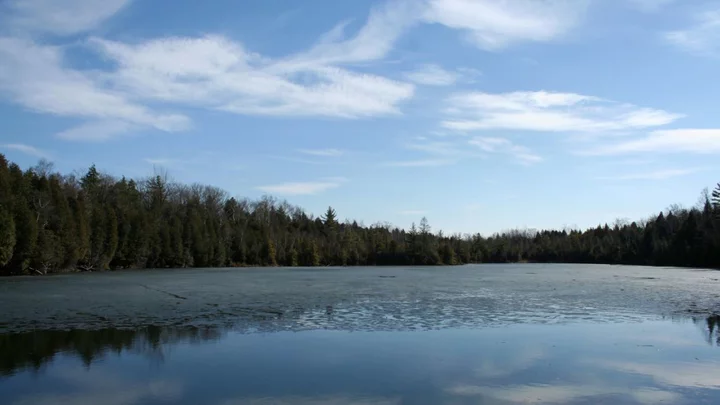
How one lake has captured the moment we changed the world forever
The floor of Crawford Lake in Ontario acts like a storybook, preserving Earth’s recent history in chronological order. Crawford Lake reveals the activities of local Iroquoian communities from the late 13th to 15th centuries, all the way through to the present day. This is because Crawford Lake is a meromictic lake, meaning that the dense bottom layer of water does not mix with the less dense upper layers. “The isolated bottom layer of water remains under disturbed, enabling the accumulation of clearly laminated valves which record precise information about the time during which they were deposited,” according to the Anthropocene Working Group. Experts have nominated Crawford Lake as representation for the start of the Anthropocene epoch, a proposed new geological era characterised by significant changes to the planet’s surface as a result of human behaviour. The Anthropocene is yet to be officially accepted as a unit of geologic time, but in 2016 a working group under the guidance of an International Commission on Stratigraphy subcommittee agreed that human behaviour has left scars so deep that they will remain evident even into the distant future. Sign up to our free Indy100 weekly newsletter One of the most notable markers of the Anthropocene is the appearance of plutonium, a radioactive material that appeared in the mid-20th century as a result of hydrogen bomb tests. “The presence of plutonium gives us a stark indicator of when humanity became such a dominant force that it could leave a unique global ‘fingerprint’ on our planet,” explained Professor Andrew Cundy, Chair in Environmental Radiochemistry at the University of Southampton and member of the Anthropocene Working Group. “In nature, plutonium is only present in trace amounts. But in the early-1950s, when the first hydrogen bomb tests took place, we see an unprecedented increase and then spike in the levels of plutonium in core samples from around the world. We then see a decline in plutonium from the mid-1960s onwards when the Nuclear Test-Ban Treaty came into effect.” Agreeing on a simple measure that defines the boundary between chapters in Earth’s history is just the first step. This measure requires agreement among scientists on a single location to define the boundaries. Known as the Global Boundary Stratotype Section and Point, or a golden spike, plays a crucial role in standardising these borders between epochs. The Anthropocene Working Group has been evaluating potential golden spike sites, from Oued Akrech, Morocco, to Alano di Piave, Italy. After spending three years assessing the qualities of a dozen potential golden spikes for the Anthropocene, finally the AGW has landed on Crawford Lake. “Crawford Lake is so special because it allows us to see at annual resolution the changes in Earth history throughout two separate periods of human impact on this small lake,” micropalaeontologist Francine McCarthy of Brock University in Canada, a voting member of the AGW, said at a press briefing. The lake’s unique properties, such as its small size, depth, and lack of water mixing create sediments that precisely record environmental changes over the past millennia. To officially establish the Anthropocene in the International Chronostratigraphic Chart, the golden spike at Crawford Lake must undergo a series of voting by various commissions and unions. If successful, it will mark the moment when human activities permanently altered the planet. Have your say in our news democracy. Click the upvote icon at the top of the page to help raise this article through the indy100 rankings.
2023-07-16 17:18

'Alien' suddenly transforms into a totally different creature in jaw-dropping underwater footage
If ever anyone needs proof that aliens exist, they need only turn to the bottom of the sea. No, we’re not talking about fragments of interstellar meteors or spacecraft, we’re not even talking about mysterious mermaids, we’re talking about the extraordinary creatures that lurk in the depths of our oceans. One of these incredible beasts has been captured on film, swimming more than 3,700ft (1,128m) below the surface of the Indian Ocean. What makes this “alien” so special is not just the fact it’s able to live so far beneath the waves, but the fact it can transform its appearance entirely in just the blink of an eye. Sign up for our free Indy100 weekly newsletter The jaw-dropping metamorphosis was recorded thanks to a remotely operated vehicle (ROV), which was exploring the sea off the East coast of Africa. In the clip, the creature – which looks more like a strange logo than a living being – can be seen floating serenely in the water. Then suddenly, 40 seconds into the video, it seems to shrink into a small black dot. On closer inspection, it’s clear that this isn’t a black dot but a jet-black jelly, decked out with streams of pulsating, technicoloured lights. The video was posted to YouTube by the user CaptainJRD back in 2013. In a caption, he explained that it was taken “at a depth of 3753 ft in the Indian Ocean within close proximity to a drill wellhead. “Near the end of the footage you can see the creature getting caught up in the output from the ROV thrusters. The video has not been altered,” he added. Alien looking creature transforming near Ocean floor at over 3700 feet.Video from ROV www.youtube.com The recording has been watched more than 5.8 million times, with viewers agreeing that it was the most “alien-looking creature” they’d ever seen. “If this isn’t one of the coolest things ever, I’m not sure what is,” one wrote. “Is no one gonna talk about how it looked like a disco ball after it transformed? This is an amazing discovery,” commented another. “This is why I never go more than 1000 ft underwater when I go to the beach,” joked a third. And a fourth added: “I’m a strong believer that everything deep deep down in the ocean looks like an alien. I also bet that there’s a lot of crazy species we’ve never seen before, hell I wouldn’t be that surprised if a 900 million-year-old dinosaur dwells at the bottom of the ocean.” Meanwhile, other commentators were quick to identify the creature, with most agreeing that it was a unique form of comb jelly. “For those wondering, this is a Bloodbelly Comb Jelly also called Lampocteis. Really beautiful creatures,” one wrote. Viewers also shared their dismay at what became of the stunning beast. Watch till the end of the video and you’ll see that no sooner does it execute its glorious transformation than it is brutally torn apart, apparently by a valve on the wellhead. “I became absolutely mesmerized. It was one of the most beautiful creatures I've ever seen, and then it suddenly just got ripped apart,” one commented. Hailing it as a “powerful video” another lamented: “The camera catches the most amazing, beautiful creature never seen before, just to see it torn to shreds by the oil blowout valve. “So very sad and also fitting for what we do to nature every second, everywhere on Earth.” Have your say in our news democracy. Click the upvote icon at the top of the page to help raise this article through the indy100 rankings.
2023-07-16 17:16

Twitter is in negative cash flow due to 50% drop in advertising revenue, says Elon Musk
Elon Musk says Twitter is still losing cash because advertising has dropped by half. In a reply to a tweet offering business advice, Mr Musk tweeted Saturday: “We’re still negative cash flow, due to (about a) 50 per cent drop in advertising revenue plus heavy debt load.” “Need to reach positive cash flow before we have the luxury of anything else,” he concluded. Ever since he took over Twitter in a $44bn deal last fall, Mr Musk has tried to reassure advertisers who were concerned about the ouster of top executives, widespread layoffs and a different approach to content moderation. Some high-profile users who had been banned were allowed back on the site. In April, Mr Musk said most of the advertisers who left had returned and that the company might become cash-flow positive in the second quarter. In May, he hired a new CEO, Linda Yaccarino, an NBCUniversal executive with deep ties to the advertising industry. But since then, Twitter has upset some users by imposing new limits on how many tweets they can view in a day, and some users complained that they were locked out of the site. Mr Musk said the restrictions were needed to prevent unauthorized scraping of potentially valuable data. Twitter got a new competitor this month when Facebook owner Meta launched a text-focused app, Threads, and gained tens of millions of sign-ups in a few days. Twitter responded by threatening legal action. Read More Elon Musk doppelganger fights fake Mark Zuckerberg in preview of cage match Twitter starts making payments to its controversial users, including $20k to Andrew Tate Threads: Elon Musk posts series of explicit tweets about Mark Zuckerberg
2023-07-16 11:21

China, Russia Military Drills Rose to a Record High in 2022
President Xi Jinping has resisted crossing Washington’s red lines over arming Russia’s war machine in Ukraine. But that
2023-07-16 10:00
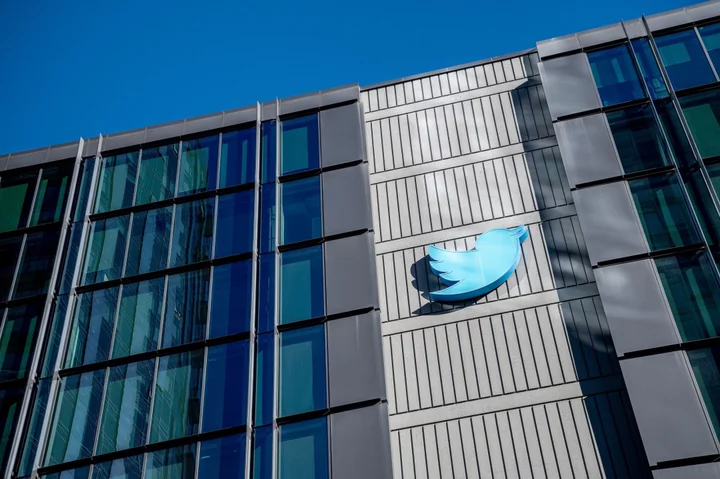
Musk Says Twitter Cash Flow Still Negative, Lifts Rate Limit
Twitter owner Elon Musk said the company still has a negative cash flow because of its heavy debt
2023-07-16 09:16
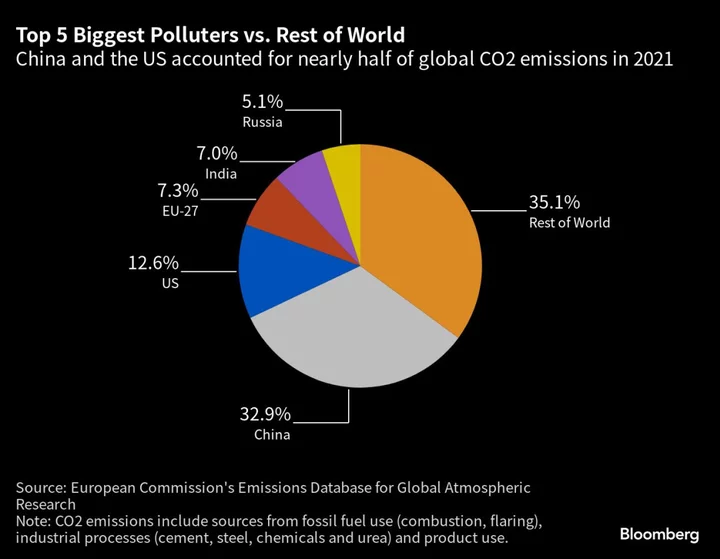
US and China Seek Climate Reset With Kerry’s Visit to Beijing
US Climate Envoy John Kerry arrives in China on Sunday for three full days of talks that will
2023-07-16 08:21
